Construction of an HBPL antibacterial coating on a phase-transition lysozyme-modified titanium surface
- PMID: 40655934
- PMCID: PMC12245776
- DOI: 10.3389/froh.2025.1615280
Construction of an HBPL antibacterial coating on a phase-transition lysozyme-modified titanium surface
Abstract
Background: In the field of dental implantation, titanium and its alloys serve as primary materials for implants due to their excellent biocompatibility. However, their insufficient antibacterial properties remain a critical limitation. Bacterial adhesion and subsequent biofilm formation on titanium alloy implant surfaces can trigger peri-implant inflammation, potentially leading to severe complications such as implant failure. To address this challenge, we developed a novel surface modification strategy that endows implants with dual functionality of antibacterial activity and enhanced cellular adhesion, thereby proposing a new approach for preventing and managing peri-implantitis.
Methods: A layer-by-layer (LbL) self-assembly technique was employed to construct polyelectrolyte coatings composed of hyperbranched polylysine (HBPL) and hyaluronic acid (HA) on phase-transitioned lysozyme (PTL)-modified titanium surfaces. The surface characteristics were systematically investigated through scanning electron microscopy (SEM) and energy-dispersive x-ray spectroscopy (EDS). Antibacterial efficacy was evaluated by monitoring bacterial viability and morphological alterations. Cytocompatibility assessments and molecular biological investigations were conducted to examine cellular responses and osteogenesis-related gene expression.
Results: A novel polyelectrolyte coating with favorable biocompatibility and antibacterial properties was successfully fabricated on PTL-modified titanium surfaces. This coating demonstrated significant antimicrobial effects while concurrently promoting osteogenic differentiation to a certain extent.
Conclusion: This study presents a dual-functional implant surface coating with combined antibacterial and osteogenic-enhancing capabilities. The developed strategy provides new insights for clinical surface modification of dental implants and offers a promising solution for peri-implantitis prevention and treatment.
Keywords: chitosan; hyaluronic acid; hyperbranched poly-L-lysine; implant; phase-transited lysozyme; surface modified.
© 2025 Li, Zhang, Yu, Zhang and Liang.
Conflict of interest statement
The authors declare that the research was conducted in the absence of any commercial or financial relationships that could be construed as a potential conflict of interest.
Figures
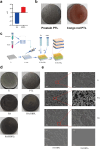
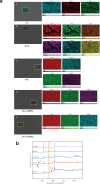

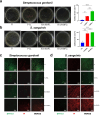
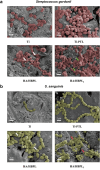


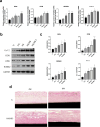
Similar articles
-
Management of urinary stones by experts in stone disease (ESD 2025).Arch Ital Urol Androl. 2025 Jun 30;97(2):14085. doi: 10.4081/aiua.2025.14085. Epub 2025 Jun 30. Arch Ital Urol Androl. 2025. PMID: 40583613 Review.
-
The Novel iMPACT Tool and Quadrant Protocol for Peri-Implantitis: Surface Refinement and Re-Osseointegration Validated by SEM/EDS and Long-Term Clinical Case Reports.Medicina (Kaunas). 2025 Jun 16;61(6):1094. doi: 10.3390/medicina61061094. Medicina (Kaunas). 2025. PMID: 40572782 Free PMC article.
-
Surface-specific outcomes of mechanical debridement with titanium, chitosan and nitinol brushes on titanium dental implant surfaces.J Dent. 2025 Jul 30;162:106010. doi: 10.1016/j.jdent.2025.106010. Online ahead of print. J Dent. 2025. PMID: 40750080
-
Enhanced osteogenesis and antibacterial activity of dual-functional PEEK implants via biomimetic polydopamine modification with chondroitin sulfate and levofloxacin.J Biomater Sci Polym Ed. 2024 Dec;35(18):2790-2806. doi: 10.1080/09205063.2024.2390745. Epub 2024 Aug 18. J Biomater Sci Polym Ed. 2024. PMID: 39155420
-
Surface modification of titanium implants with Mg-containing coatings to promote osseointegration.Acta Biomater. 2023 Oct 1;169:19-44. doi: 10.1016/j.actbio.2023.07.048. Epub 2023 Jul 28. Acta Biomater. 2023. PMID: 37517617
References
LinkOut - more resources
Full Text Sources

